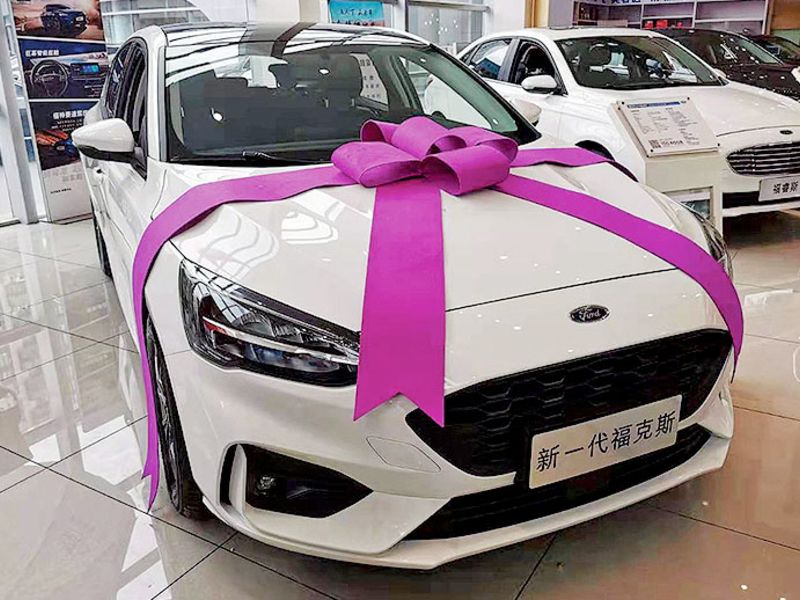
SHANGHAI — At November’s Guangzhou auto show, one of the most important shows in China, Ford Motor Co. put its freshened Focus sedan and hatchback at the center of its stage.
Chen Xiaobo, executive vice president of Ford China’s National Sales and Service Division, told the media at the show that, with its newly restyled interior and the addition of a wagon version, the Focus would “greatly satisfy” the needs of young Chinese consumers.
But China’s dealers and analysts aren’t so sure about that.
“Time has changed,” said an executive at a Shanghai-based dealer group who asked not to be identified because of his group’s close ties with Ford’s China unit. “For all these efforts, it would be hard for Ford to restore the past glory for the Focus.”
In reality, the Ford Focus has been encountering the same consumer headwinds in China that it did in the U.S. market. In the U.S., Ford has largely abandoned sedans for it product portfolio. It shifted Focus production to China in 2018 because it was proving refreshingly popular among Chinese consumers. But even there, attitudes are changing.
Ford launched the compact sedan in China in 2005, followed by a hatchback variation the next year — the first global brand to offer a hatchback there.
With the car’s design and Ford’s prestige as an international brand, Focus sales rose steadily in China. From 2012 to 2014, it became the market’s top-selling sedan. That enthusiasm helped move Ford to decide that China, not North America, was the sweet spot for the Focus.
But after its high of 392,000 sales in 2014, Focus sales went into decline. Last year, as China’s automakers worked through the pandemic, the Focus mustered only 35,000 sales, according to China Passenger Car Alliance, the data unit of the China Automobile Dealers Association.
According to the dealer group executive who runs Ford stores in the Shanghai area, the model is falling victim to fast-rising competition.
“Unlike 10 years ago, the Focus now has too many competitors in the market,” he said.
The competition comes not only from the compact cars of other global brands — including Volkswagen, Buick, Toyota and Nissan — but also from similar models of major Chinese marques such as Geely and Roewe, which have improved product quality over the years, he added.
Ford also may have been out of step with its competitors on marketing last year.
To stimulate sales demand in the wake of the coronavirus disruption, most global mass-market brands slashed prices on their compact sedans. Ford did not. The Focus price range remained unchanged at the equivalent of about $16,900 to $24,400.
“At such a price range, the Focus lacks competitiveness in its segment,” the executive said.
Ford also faces a hurdle in stoking demand for the car’s three-cylinder gasoline engines, said John Zeng, Asia director of LMC Automotive.
In its current form, the Focus uses the engine technology it adopted in late 2018, a 1.5-liter naturally aspirated or turbocharged three- cylinder engine. The higher- priced wagon variant has a 1.5-liter turbocharged engine.
Some Chinese shoppers expressed their disappointment on popular local auto websites such as Yiche and Autohome after the three versions of the Focus went on sale in November.
But the unfavorable view of three-cylinder engines is not unique to the Focus.
Grumbling emerged in 2018 when General Motors took the lead among global automakers in installing three-cylinder engines in a wide array of its compact products. That quickly created consumer backlash.
“Consumers typically complained that the engines created too much vibration and noises,” Zeng said.
GM defended the reliability of its three-cylinder engines. But tumbling sales of related models prompted it to add four-cylinder engine variants in 2020 for some of the models, such as the Buick Excelle and the Chevrolet Cruze.
Despite a 32 percent sales rebound of crossovers and SUVs, Ford brand’s China deliveries dipped 1.2 percent from a year earlier to roughly 324,000 in 2020, according to Ford Motor Co.’s China unit.
But Jimmy Tsung, COO of Lio Ho Vehicle Group China, a Taiwan-based company that operates more than 10 Ford franchises in mainland China, believes the Ford brand still needs the Focus, as well as the smaller Escort, a nameplate Ford resurrected in China in 2014.
“Ford must sell Focus and Escort well in the Chinese market to have a chance to gain a larger market share,” Tsung said.
But Ford has a long way to go to restore the two sedans as volume generators. Data from the China Passenger Car Alliance show Escort sales in China also thinned to a trickle last year, to about 33,100.
Tsung believes the automaker is moving in the right direction to boost Focus sales.
While leaving the model’s exterior little changed in the freshen, Ford upgraded the interiors to appeal to young customers. It now comes with an 8-inch full LCD digital instrument panel, matched with a 12.3-inch color touch screen. It also is equipped with Ford’s SYNC+ infotainment system that integrates artificial intelligence technology of Chinese Internet giant Baidu.
Adding the wagon version will help the Focus meet consumers’ diverse needs, Tsung said. To win shoppers over to the three-cylinder engine, Ford is now offering a lifetime free warranty on the engine.
Tsung and others believe there is still life in the Chinese sedan.

